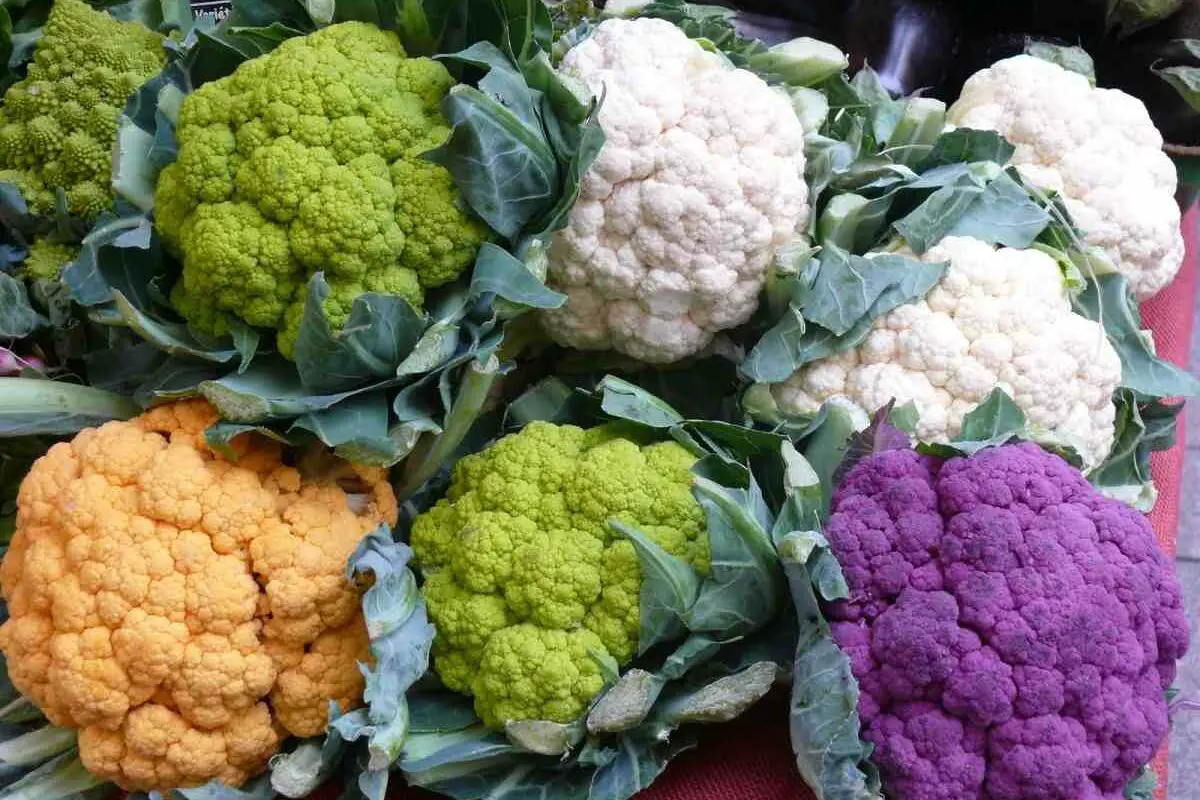Cauliflower farming is an agricultural practice that involves cultivating and growing cauliflower crops in order to produce a wholesome harvest. This particular farming method requires careful planning, knowledge of the cauliflower plant’s growth cycle, and appropriate soil and weather conditions. Farmers need to ensure that the soil is well-drained and rich in nutrients to support optimal cauliflower growth. They also need to monitor weather conditions to protect the crop from extreme temperatures and pests. Moreover, cauliflower farming often involves sustainable practices, such as crop rotation and the use of organic fertilizers, to maintain soil health and minimize environmental impact. Through these efforts, cauliflower farmers strive to cultivate a bountiful and nutritious harvest that not only satisfies consumer demand but also promotes overall well-being and a healthier lifestyle.
What We Will Cover
Nutritional Value
We use Cauliflower for its nutritional value as it enhances your health and well-being. Nevertheless, cauliflower surpasses cooking as it has a significant history and meaning. The cauliflower head resembles a small cloud that grows better in temperate climates. It is ideal for many farms due to its ability to grow on different soils that have little amount of shade. After the 50 – 60 days growing stage of the plant, the edible part is developed for up to 4 – 6 weeks and forms the head. Let’s understand other factors about cauliflower farming along with its varieties, health benefits and farming process.
Cauliflower Varieties
White cauliflower is the most famous type of cauliflower, but many other varieties bring different tastes to cooking. Different cauliflower varieties offer a whole range of options to explore in the kitchen.
- Green cauliflower: Green cauliflower is slightly bitter, usually served with salads, adding a visual punch.
- Purple cauliflower: The purple cauliflower, sporting a vivid purple shade, presents a gentle sweetness and is commonly used for roasted vegetables.
- Orange cauliflower: Orange cauliflower is low in calories and high in antioxidants, thus providing a subtle sweetness that is mostly used in soups and stews.
Nutritional Benefits of Cauliflower
Cauliflower is more than a tasty meal as it is packed with vitamins, minerals, and fibres. Cauliflower has an impressive nutritional profile that makes it a great addition to a healthier, balanced diet.
| Nutrient | Function |
| Vitamin C | Necessary for immune function and collagen production |
| Vitamin K | Essential for blood clotting and bone health |
| Fibre | Vital for good digestive health and feeling full |
| Low in calories | Beneficial for weight management and general health |
Commercial Cauliflower Farming
Cauliflower is cultivated on a commercial basis for sale in wholesale markets. This enterprise needs planning, proper land management, availability of labour, and transportation resources.
- Cultivar selection: The use of highly productive varieties that consistently give high-quality heads is imperative for profitability.
- Irrigation and fertilisation: Supplying moisture at a consistent level and ensuring nutrient availability is important to promote optimal plant growth and yield.
- Crop rotation: Rotating cauliflower with other vegetables in order to keep the soil healthy and ensure that pests and diseases do not arise.
- Integrated pest management (IPM): Likewise, IPM strategies reduce the application of strong chemicals by using biological, cultural, and chemical methods. These practices enhance sustainable production in commercial cauliflower farming as well as a competitive market.
Cultivating Cauliflower: A Step-by-Step Guide
- Site Selection: Choose a place that has good drainage capability and is exposed for long hours in the sun every day. It demands that such soil be well drained and should have a pH rating of 6.0 to 7.0. For instance, when using a New Holland Excel tractor, such soil conditions would ensure ideal cultivation.
- Soil Preparation: The use of compost or aged manure can add some nutrients as well as improve drainage capabilities in the soil. This will provide enough nourishment for the growth of the cauliflower plants.
- Planting: Either transplants or directly sowing seeds onto the already prepped soil could be used. Direct seeding is normally done in the spring or fall, depending upon the climatic conditions of your state, while transplants can be planted as soon as the soil warms up. Create an airy environment by spacing plants about 18-24 inches apart so as to ensure free air movement and avert overcrowding.
- Watering: Cauliflowers should be watered often, particularly during dry seasons. Ensure adequate deep watering, however sparingly enough to allow the soil to dry out in between watering. This leads to root rot as well as other problems when watered too frequently.
- Fertilisation: In addition, balanced fertiliser should be applied every 4–6 weeks to enhance growth and normal development. In addition, it is important to always follow the recommended rates and timings as indicated on fertiliser labels.
- Pest and Disease Control: Regularly check for pests or ailing plants. These include cabbage worms, aphids, flea beetles, clubroot, black rot, Alternaria leaf spot, and others. Whenever possible, use organic forms of pest control, like insecticidal soap and neem. Finally, only resort to organically based pesticides or fungicides if truly necessary.
- Harvesting: 50-60 days after transplanting, cauliflower heads should be firm and closely packed together. The head should be of such a weight for the size, while the colour should be uniform. Cut off the top of the stem close to the head by one inch or two. Cut off heads of harvested cauliflowers in the cool morning when not wet.
Final Thoughts About Cauliflower Farming
By simply cultivating cauliflower plants, such as with the help of a powerful tractor like the mahindra tractor 50 hp and knowing Mahindra tractor 50 hp price can help you can access fresh and healthy vegetables. Growing cauliflower allows you to harvest this versatile vegetable and use it in various dishes. Enjoy the sweetness of homegrown produce while relishing the natural goodness of cauliflower.
